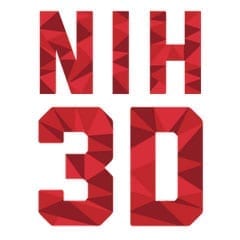 The National Institutes of Health has launched the NIH 3D Print Exchange, a public website that enables users to share, download and edit 3D print files related to health and science. These files can be used, for example, to print custom laboratory equipment and models of bacteria and human anatomy.
The National Institutes of Health has launched the NIH 3D Print Exchange, a public website that enables users to share, download and edit 3D print files related to health and science. These files can be used, for example, to print custom laboratory equipment and models of bacteria and human anatomy.
“3D printing is a potential game changer for medical research,” said NIH Director Francis S. Collins, M.D., Ph.D. “At NIH, we have seen an incredible return on investment; pennies’ worth of plastic have helped investigators address important scientific questions while saving time and money. We hope that the 3D Print Exchange will expand interest and participation in this new and exciting field among scientists, educators and students.”
NIH uses 3D printing, or the creation of a physical object from a digital model, to study viruses, repair and enhance lab apparatus, and help plan medical procedures. The 3D Print Exchange makes these types of files freely available, along with video tutorials for new users and a discussion forum to promote collaboration. The site also features tools that convert scientific and clinical data into ready-to-print 3D files.
The 3D Print Exchange is a collaborative effort led by NIH’s National Institute of Allergy and Infectious Diseases (NIAID). “3D printing is helping to advance science at NIAID and beyond,” said NIAID Director Anthony S. Fauci, M.D. “The ability to design and print tangible models of pathogens, for example, can give researchers a fresh perspective on the diseases they study and open new and promising lines of investigation.”
Additional support is provided by other NIH components, including the Eunice Kennedy Shriver National Institute of Child Health and Human Development and the National Library of Medicine. The 3D Print Exchange is funded in part by the U.S. Department of Health and Human Services through its Ignite and Ventures programs, which help support innovation within the agency.
Source: NIH press release, adapted.


